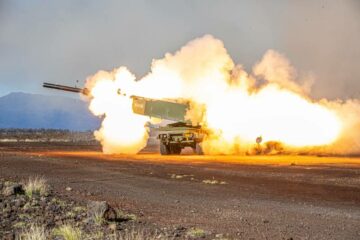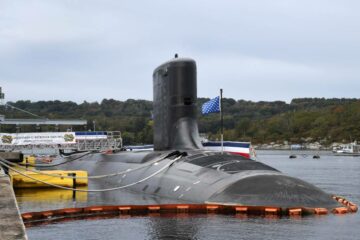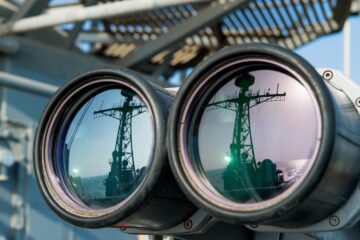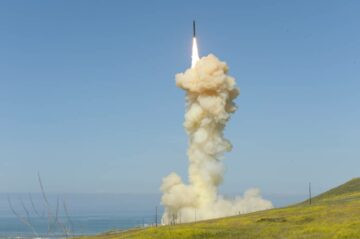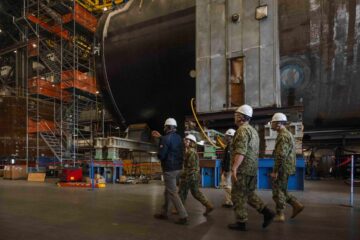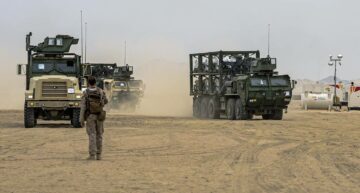U.S. Space Command officials are advocating for an additional $1.2 billion in fiscal 2025 funding to boost the military’s offensive and defense space capabilities and strengthen its ability to observe and detect adversary activity in orbit.
The bulk of the request — more than $800 million — would support classified programs to develop capabilities aimed at deterring and fending off aggression from Russia and China. That includes a U.S. Navy Mobile Counterspace Capability and an effort called Lunar Locust, neither of which were detailed in an unclassified version of the command’s unfunded priority list obtained by Defense News.
RELATED
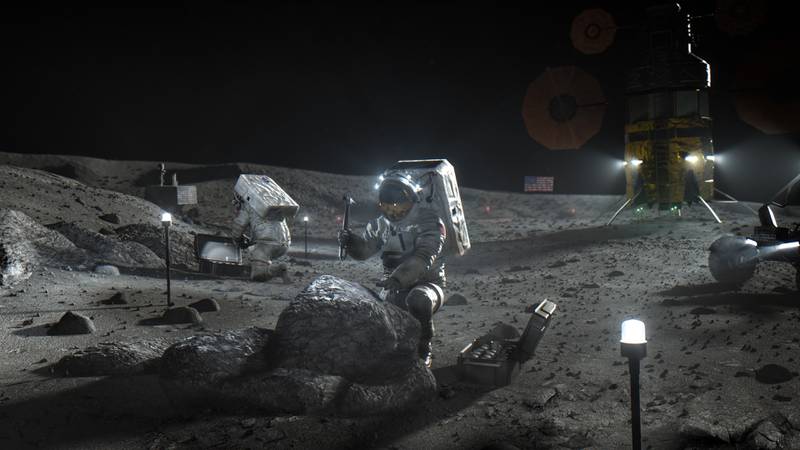
Each year after the White House unveils its budget submission, the military services and combatant commands send Congress a rundown of programs they want to fund but that weren’t included in the request. This year’s list comes as Space Command officials express growing concern about how China and Russia’s space ambitions could impact U.S. military operations.
In a memo accompanying the document, SPACECOM Commander Gen. Stephen Whiting labeled China’s activities in particular as “increasingly assertive actions” that threaten critical space infrastructure.
“This in turn puts Soldiers, Sailors, Airmen, Marines and Guardians at risk, who rely on space capabilities every day,” he said. “Both states are already deploying counterspace capabilities that can target U.S. space systems.”
Whiting raised particular alarm about threats to GPS, a Space Force-run satellite constellation that provides navigation and timing capabilities to civilian and military users. He also highlighted Russia’s growing focus on cyber and nuclear capabilities, a concern that follows reports that Russia may be building a nuclear-armed spacecraft.
Beyond the classified space efforts, the command’s list also includes $393 million for commercial and military operations facilities and space domain awareness sensors and radars.
Space Command said it needs another $26 million for its Joint Commercial Operations Cell, which pulls commercial tracking data and uses it to augment military inputs. The cell has agreements with 14 international allies, and additional funding would improve access to the data it provides. It would also help support more robust space observation capabilities.
“Without funding, expansion capabilities will not be integrated, putting U.S. allies and partner nation protect and defend operations at risk,” the command said.
The list also includes $161 million for an effort called Project Lighthouse, which integrates space domain awareness radars and sensors to help coordinate Space Command’s understanding of what’s happening in orbit. The money would fund software upgrades, improved data flow and completion of a Multi-Mission Advanced Radar Capability.
To support further space observation capabilities, the command requests $179 million for sensor modernization, including the Army’s Long-Range Tracking and Instrumentation Radar located at the Reagan Test Site in the Marshall Islands.
“Radar capabilities and infrastructure at the Reagan Test Site are the only multi-phenomenology, deep-space surveillance systems in the Pacific,” Space Command said. “Loss of transmitters, power supply or . . . all-weather deep space coverage will take years to recover from.”
Bryant Harris contributed to this story.
Courtney Albon is C4ISRNET’s space and emerging technology reporter. She has covered the U.S. military since 2012, with a focus on the Air Force and Space Force. She has reported on some of the Defense Department’s most significant acquisition, budget and policy challenges.
- SEO Powered Content & PR Distribution. Get Amplified Today.
- PlatoData.Network Vertical Generative Ai. Empower Yourself. Access Here.
- PlatoAiStream. Web3 Intelligence. Knowledge Amplified. Access Here.
- PlatoESG. Carbon, CleanTech, Energy, Environment, Solar, Waste Management. Access Here.
- PlatoHealth. Biotech and Clinical Trials Intelligence. Access Here.
- Source: https://www.defensenews.com/battlefield-tech/space/2024/03/22/space-command-seeks-12-billion-to-counter-threats-in-orbit/
- :has
- :is
- :not
- 1
- 10
- 14
- 2%
- 2012
- 2025
- 70
- 800
- a
- ability
- About
- access
- accompanying
- acquisition
- activities
- Additional
- advanced
- adversary
- advocating
- After
- agreements
- aimed
- AIR
- Air Force
- alarm
- already
- also
- ambitions
- an
- and
- and infrastructure
- Another
- ARE
- AS
- At
- augment
- awareness
- BE
- Billion
- boost
- budget
- Building
- bulk
- but
- by
- called
- CAN
- capabilities
- capability
- cell
- challenges
- China
- Chinas
- civilian
- classified
- comes
- commercial
- completion
- Concern
- contributed
- coordinate
- could
- Counter
- coverage
- covered
- critical
- cyber
- data
- day
- deep
- defend
- Defense
- deploying
- detailed
- detect
- develop
- document
- domain
- effort
- efforts
- emerging
- Emerging Technology
- Every
- every day
- expansion
- express
- facilities
- false
- Fiscal
- flow
- Focus
- follows
- For
- Force
- from
- fund
- funding
- further
- Gen
- gps
- Growing
- Guardians
- Happening
- he
- help
- Highlighted
- House
- How
- http
- HTTPS
- image
- images
- Impact
- improve
- improved
- in
- included
- includes
- Including
- Infrastructure
- inputs
- integrated
- Integrates
- International
- Islands
- IT
- ITS
- joint
- jpg
- lighthouse
- List
- located
- Lunar
- Military
- million
- Mobile
- modernization
- money
- more
- most
- nation
- Navigation
- needs
- Neither
- news
- nuclear
- observation
- observe
- obtained
- of
- off
- offensive
- officials
- on
- only
- Operations
- or
- Orbit
- Pacific
- particular
- partner
- plato
- Plato Data Intelligence
- PlatoData
- policy
- power
- Power Supply
- priority
- Programs
- project
- protect
- provides
- Pulls
- Puts
- Putting
- radar
- raised
- Recover
- rely
- Reported
- reporter
- Reports
- request
- requests
- Reuters
- Risk
- robust
- Russia
- s
- Said
- satellite
- satellite constellation
- Screen
- Seeks
- send
- sensors
- Services
- she
- significant
- since
- site
- Software
- some
- Space
- Space Force
- States
- Stephen
- Story
- Strengthen
- submission
- supply
- support
- surveillance
- Systems
- Take
- Target
- Technology
- test
- than
- that
- The
- they
- this
- threaten
- threats
- timing
- to
- Tracking
- transmitters
- TURN
- u.s.
- U.S. Navy
- understanding
- Unveils
- upgrades
- users
- uses
- version
- want
- were
- which
- white
- White House
- WHO
- will
- with
- would
- year
- year after
- years
- zephyrnet


